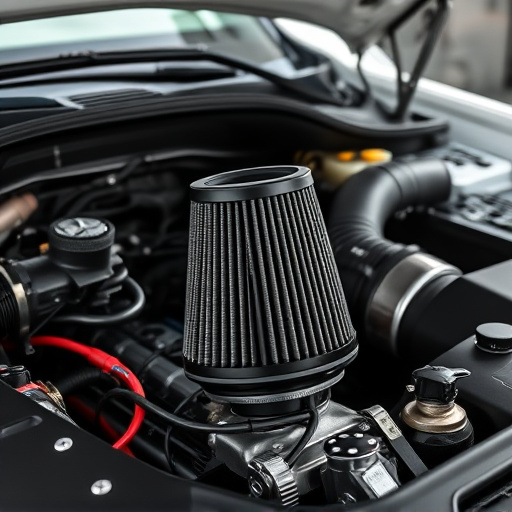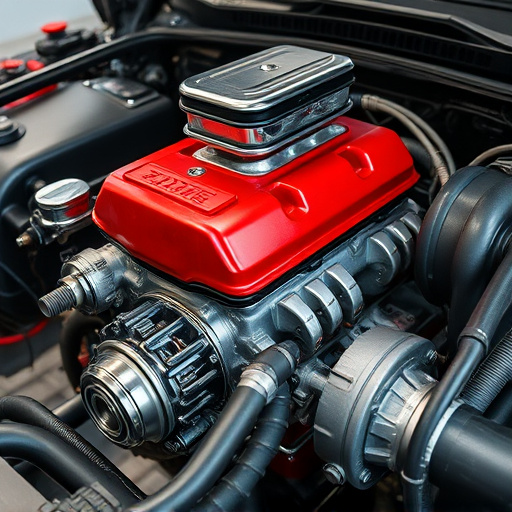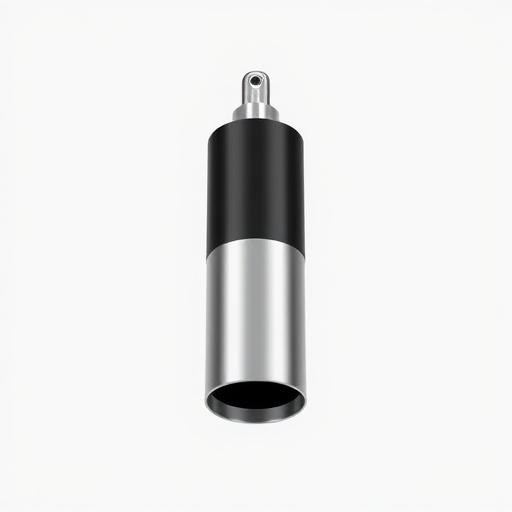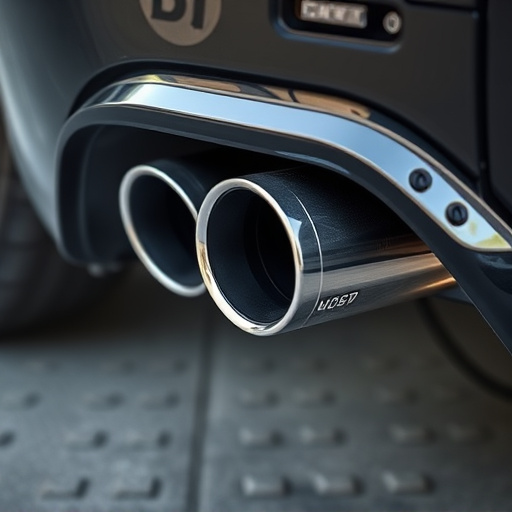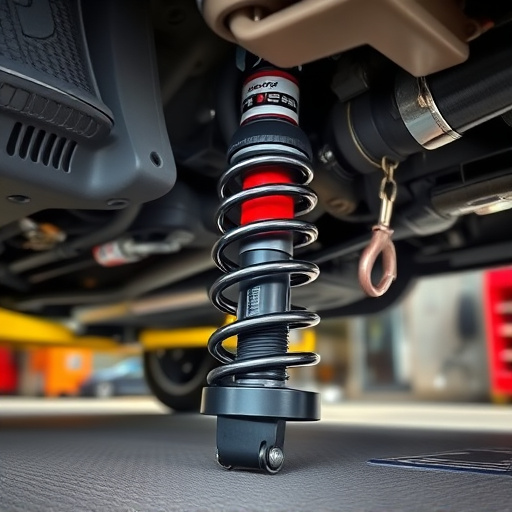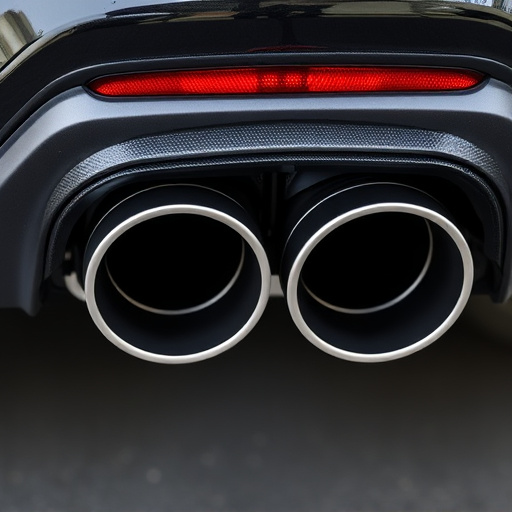Backpressure, a fluid dynamics concept, restricts airflow in vehicles, impacting performance. Resonator deletes remove specific components to alter air paths, reducing backpressure and improving airflow. This leads to better fuel-air mixture, increased power output, and improved fuel economy, making them crucial modifications for high-performance vehicles. By removing sections of the exhaust pipe, resonator deletes mitigate backpressure and unwanted sound waves, enhancing system efficiency and ensuring optimal power delivery during high-performance scenarios. Integrating resonator deletes with tuned air intake systems and high-performance air filters results in faster response times, increased horsepower, better acceleration, and improved top-end speed, offering a more dynamic driving experience.
“Uncover the transformative power of resonator delete technology and its profound impact on backpressure and fluid flow. This article delves into the intricate world of backpressure, exploring its effects on system dynamics. We then highlight the strategic role of resonator deletes in mitigating these challenges, revolutionizing flow patterns.
Through a comprehensive guide, learn how implementing resonator delete solutions optimizes flow dynamics, ensuring efficient and seamless processes. Discover the game-changing potential for various industries.”
- Understanding Backpressure and Its Effects on Fluid Flow
- The Role of Resonator Deletes in Mitigating Backpressure
- Optimizing Flow Dynamics with Resonator Delete Implementation
Understanding Backpressure and Its Effects on Fluid Flow
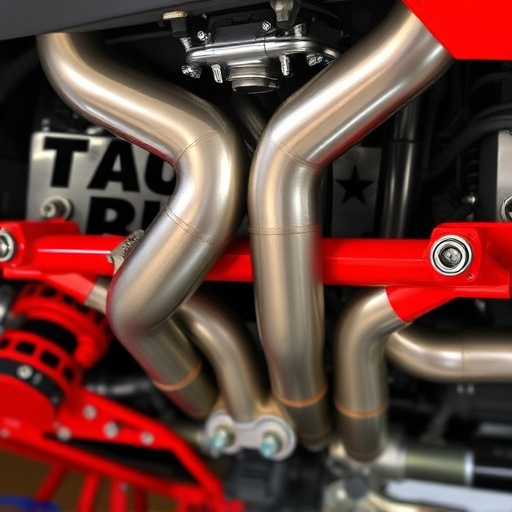
Backpressure, a fundamental concept in fluid dynamics, refers to the resistance encountered by a fluid as it flows through a system. In the context of automotive engineering, backpressure plays a significant role in determining the performance and efficiency of various components, particularly those related to engine intake systems. When air or fuel is forced to flow against resistance, it creates pressure that can impact the overall flow rate and, consequently, the vehicle’s performance. This is where resonator delete modifications come into play, offering a unique approach to mitigate backpressure and enhance fluid dynamics.
By eliminating or modifying specific intake components, such as resonators, engineers can alter the air path, reducing restrictions that cause backpressure. This simple change can lead to improved airflow, allowing for better mixture of fuel and air in the engine’s combustion chamber. Moreover, it benefits from enhanced vehicle performance by enabling a smoother and more efficient flow of performance air filters, ultimately contributing to better power output and fuel economy.
The Role of Resonator Deletes in Mitigating Backpressure
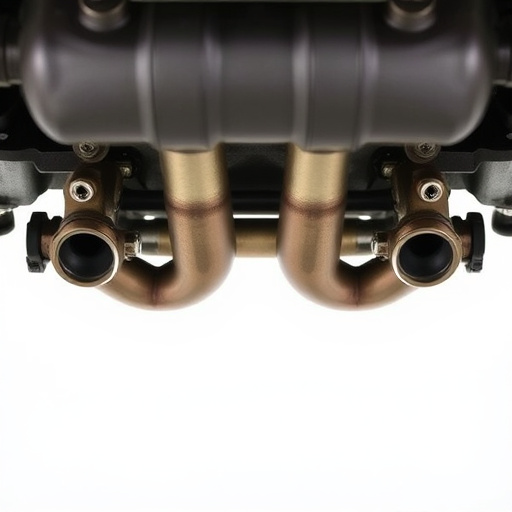
Resonator deletes play a pivotal role in mitigating backpressure within automotive exhaust systems. By removing specific sections of the exhaust pipe, typically near the mid-section, these modifications reduce unwanted sound waves and vibrations that can build up and cause pressure spikes. This is particularly beneficial for vehicles with performance exhaust systems, where the focus on sound output can sometimes lead to higher backpressure, negatively impacting engine performance and efficiency.
Effective resonator deletes act as strategic breaks in the exhaust flow, allowing gases to escape more freely and evenly. This not only eases backpressure but also enhances overall system efficiency. Moreover, they contribute to a smoother transition of exhaust gases, especially during high-performance scenarios, ensuring that power is delivered optimally to the wheels instead of being hindered by residual pressure buildup at the brake components.
Optimizing Flow Dynamics with Resonator Delete Implementation
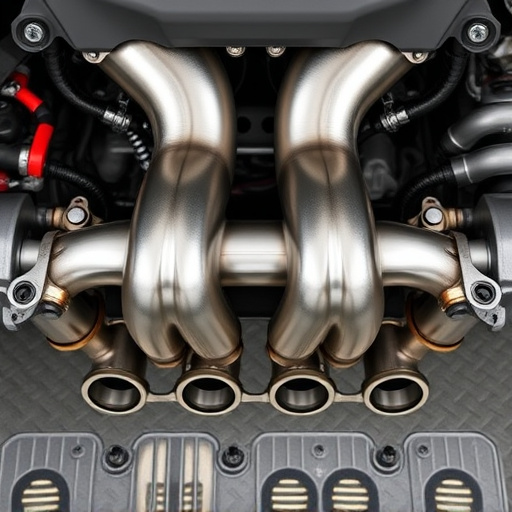
The implementation of a resonator delete can significantly optimize flow dynamics within an engine’s exhaust system. By removing the resonator, which is designed to suppress sound waves and reduce backpressure, engineers and enthusiasts unlock enhanced performance potential. This simple modification allows for smoother air flow, enabling the efficient transfer of exhaust gases and improving overall engine performance.
Additionally, integrating a resonator delete with well-tuned air intake systems and high-performance air filters can further elevate the impact. These upgrades collectively contribute to better combustion efficiency, faster response times, and increased horsepower. As a result, vehicles equipped with these modifications often exhibit improved acceleration and top-end speed, catering to those seeking a more dynamic driving experience.
Resonator deletes have a significant impact on fluid dynamics, particularly by reducing backpressure and optimizing flow. By eliminating unwanted pressure waves, these devices enhance overall system performance, making them an essential tool in various industries. Understanding the interplay between backpressure and flow is crucial when implementing resonator deletes, ensuring efficient and effective solutions for improving process efficiency and energy conservation.









